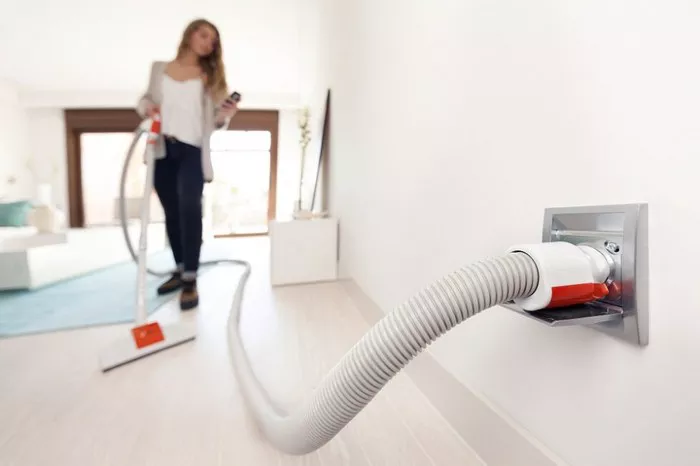Maintaining a clean and efficient central vacuum system is essential for ensuring optimal performance and prolonging its lifespan. While regular cleaning of the vacuum unit itself is common practice, it’s equally important to clean the central vacuum pipes. Over time, dirt, debris, and even mold can accumulate within the pipes, leading to decreased suction power and potential blockages. This comprehensive guide will walk you through the steps required to effectively clean your central vacuum pipes, ensuring your system operates at its best.
Understanding Central Vacuum Systems
Before delving into the cleaning process, it’s crucial to have a basic understanding of how central vacuum systems work. These systems consist of a central unit typically installed in a garage or utility room, connected to various inlet valves throughout the house via a network of PVC pipes. When you connect a hose to one of these inlet valves, the central unit creates suction, allowing you to vacuum your floors and surfaces.
Signs Your Central Vacuum Pipes Need Cleaning
Several indicators suggest that it’s time to clean your central vacuum pipes:
1. Decreased Suction Power: If you notice a significant decrease in suction power when using your central vacuum system, it could indicate that the pipes are clogged or obstructed.
2. Unpleasant Odors: Foul odors emanating from the inlet valves or central unit may signal the presence of mold or bacteria within the pipes.
3. Visible Debris: Inspecting the inlet valves or using a flashlight to peer into the pipes may reveal visible debris or buildup, indicating the need for cleaning.
Cleaning Supplies
Before you begin the cleaning process, gather the following supplies:
1. Central Vacuum Pipe Cleaning Kit: This kit typically includes flexible rods, brushes, and attachments designed specifically for cleaning central vacuum pipes.
2. Towels or Rags: These will come in handy for wiping down surfaces and containing any mess during the cleaning process.
3. Vacuum Hose and Attachment: Use a vacuum hose with a narrow attachment to remove loosened debris from the pipes.
Step-by-Step Cleaning Process
Follow these steps to clean your central vacuum pipes effectively:
1. Turn Off the Power: Before starting any maintenance, disconnect the power supply to the central vacuum unit to prevent accidental activation.
2. Access the Pipes: Identify the inlet valves throughout your home and open them to access the pipes. You may need to use a screwdriver to remove the valve covers.
3. Use the Cleaning Kit: Attach the flexible rods and brushes from the cleaning kit to remove dirt and debris from the pipes. Insert the rod into the pipe and gently push it through, twisting as needed to dislodge any buildup.
4. Repeat as Necessary: Continue cleaning each section of the pipe network until the rods come out clean. Pay special attention to areas where debris tends to accumulate, such as bends or elbows.
5. Vacuum Remaining Debris: Once you’ve loosened the debris, use a vacuum hose with a narrow attachment to suction out any remaining dirt and debris from the pipes.
6. Inspect for Mold: If you notice signs of mold or mildew during the cleaning process, consider using a mild cleaning solution and a brush to remove it. Ensure the pipes are completely dry before reassembling.
Conclusion
Regular cleaning of central vacuum pipes is essential for maintaining optimal performance and extending the lifespan of your system. By following the steps outlined in this guide and investing in the right cleaning supplies, you can ensure that your central vacuum operates efficiently for years to come.
FAQs
Q1: How often should I clean my central vacuum pipes?
A1: It’s recommended to clean your central vacuum pipes at least once a year to prevent buildup and maintain suction power. However, if you notice a decrease in performance or detect unpleasant odors, it’s wise to clean them more frequently.
Q2: Can I use household cleaners to clean central vacuum pipes?
A2: It’s not advisable to use harsh chemical cleaners on central vacuum pipes, as they can damage the PVC material and potentially harm the system. Instead, opt for mild cleaning solutions or specialized pipe cleaning products designed for central vacuum systems.
Q3: What should I do if I encounter stubborn blockages during the cleaning process?
A3: If you encounter stubborn blockages that cannot be cleared with the cleaning kit, it’s best to contact a professional central vacuum technician for assistance. Attempting to force the blockage may cause damage to the pipes or the central vacuum unit.

